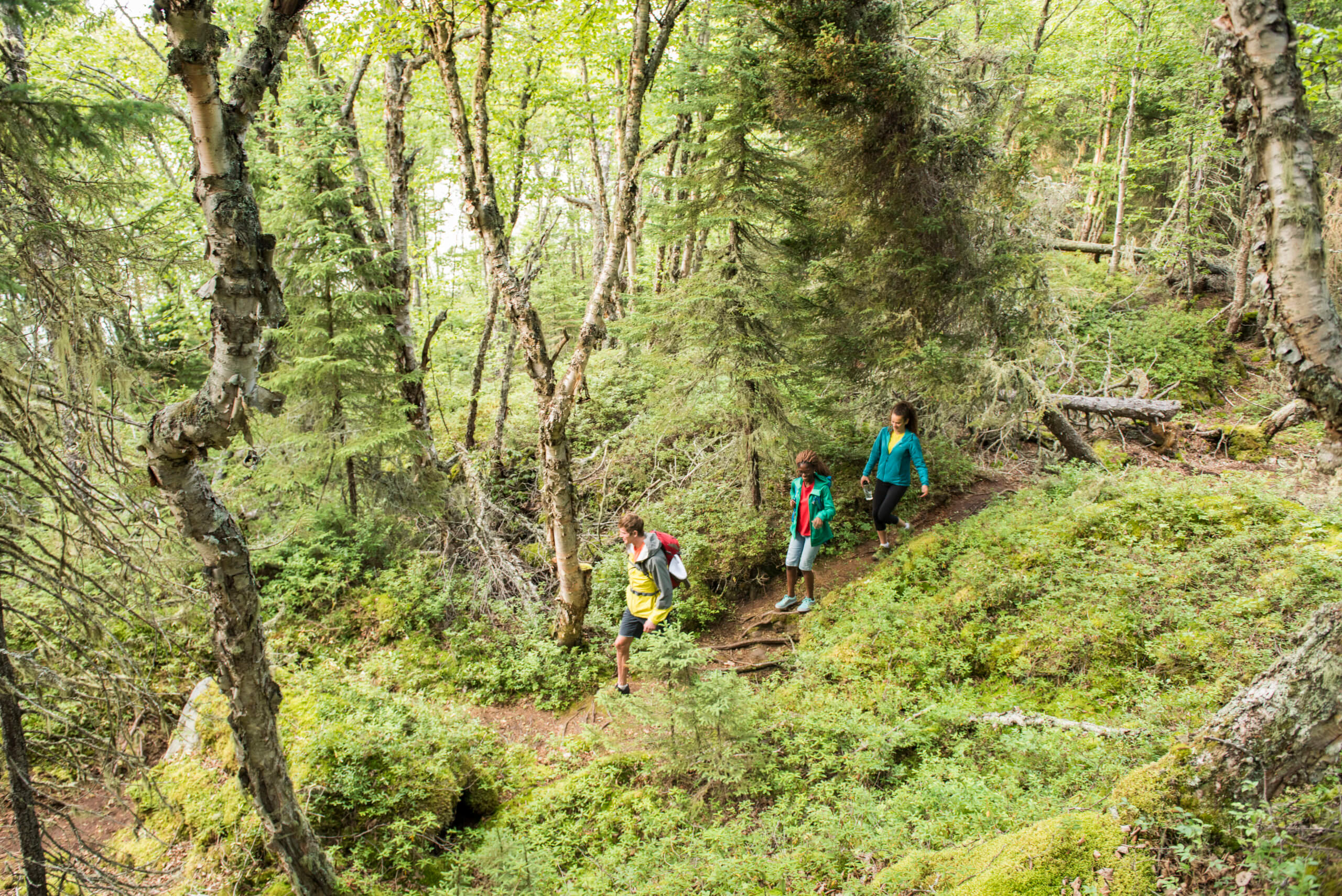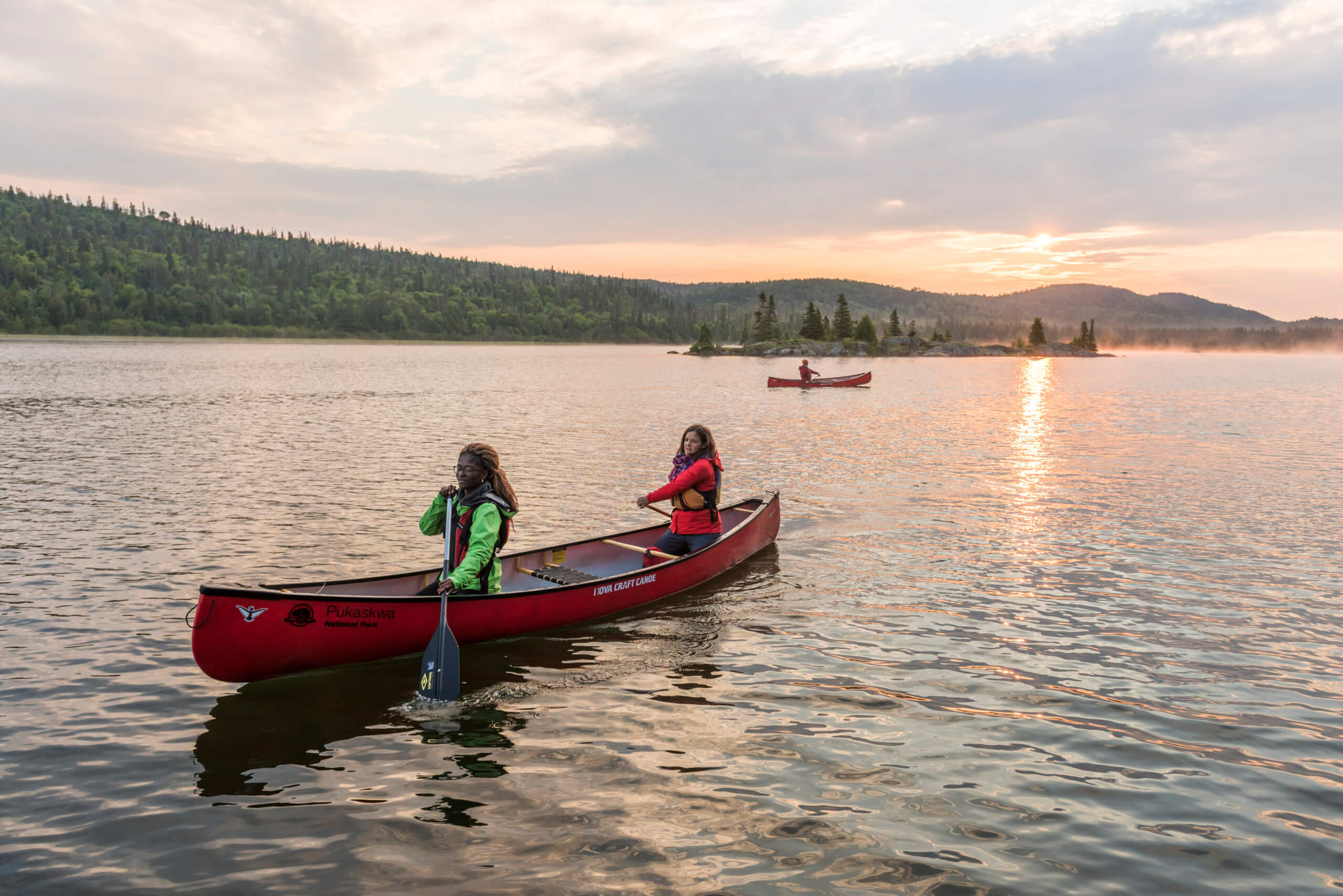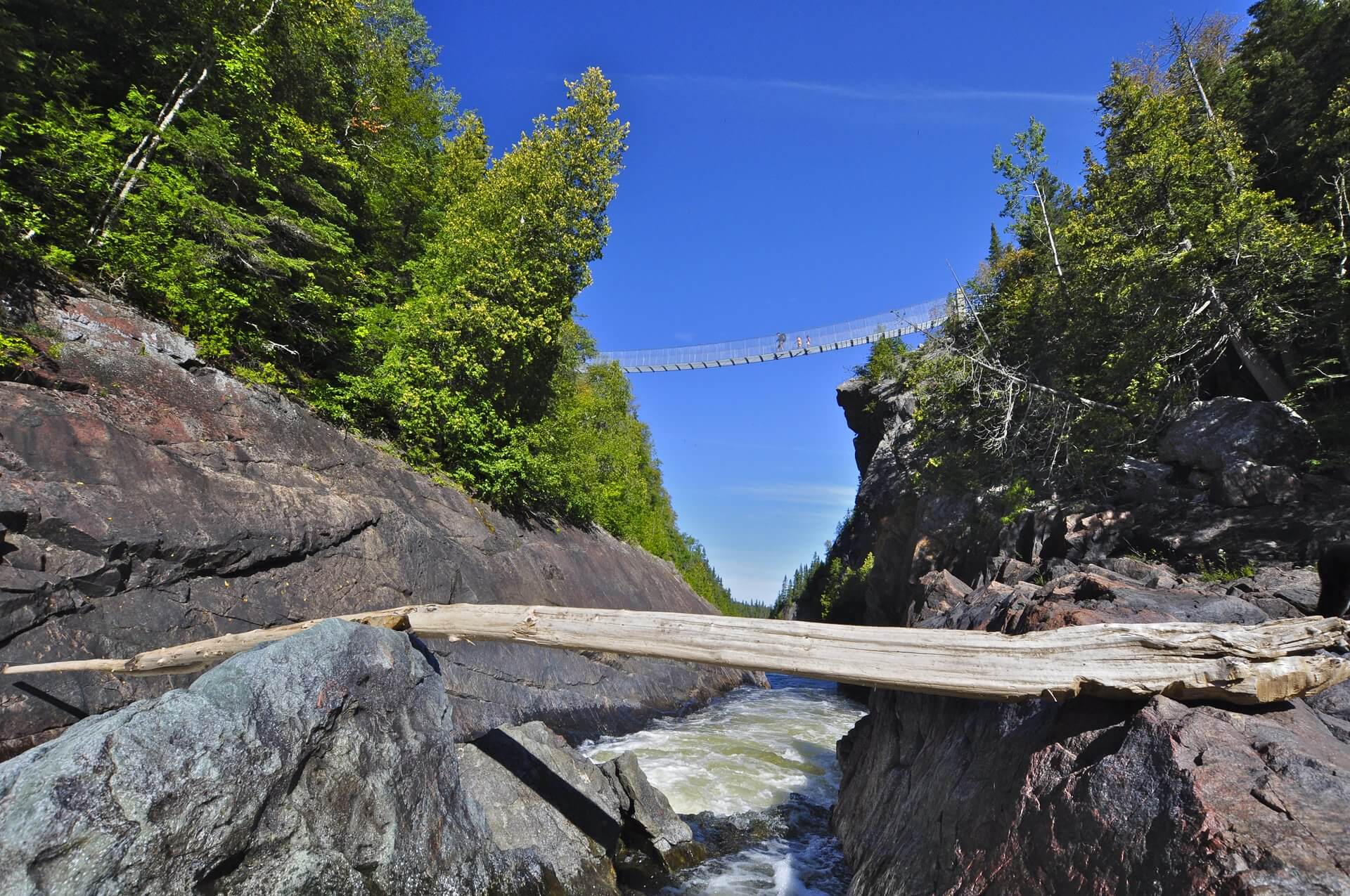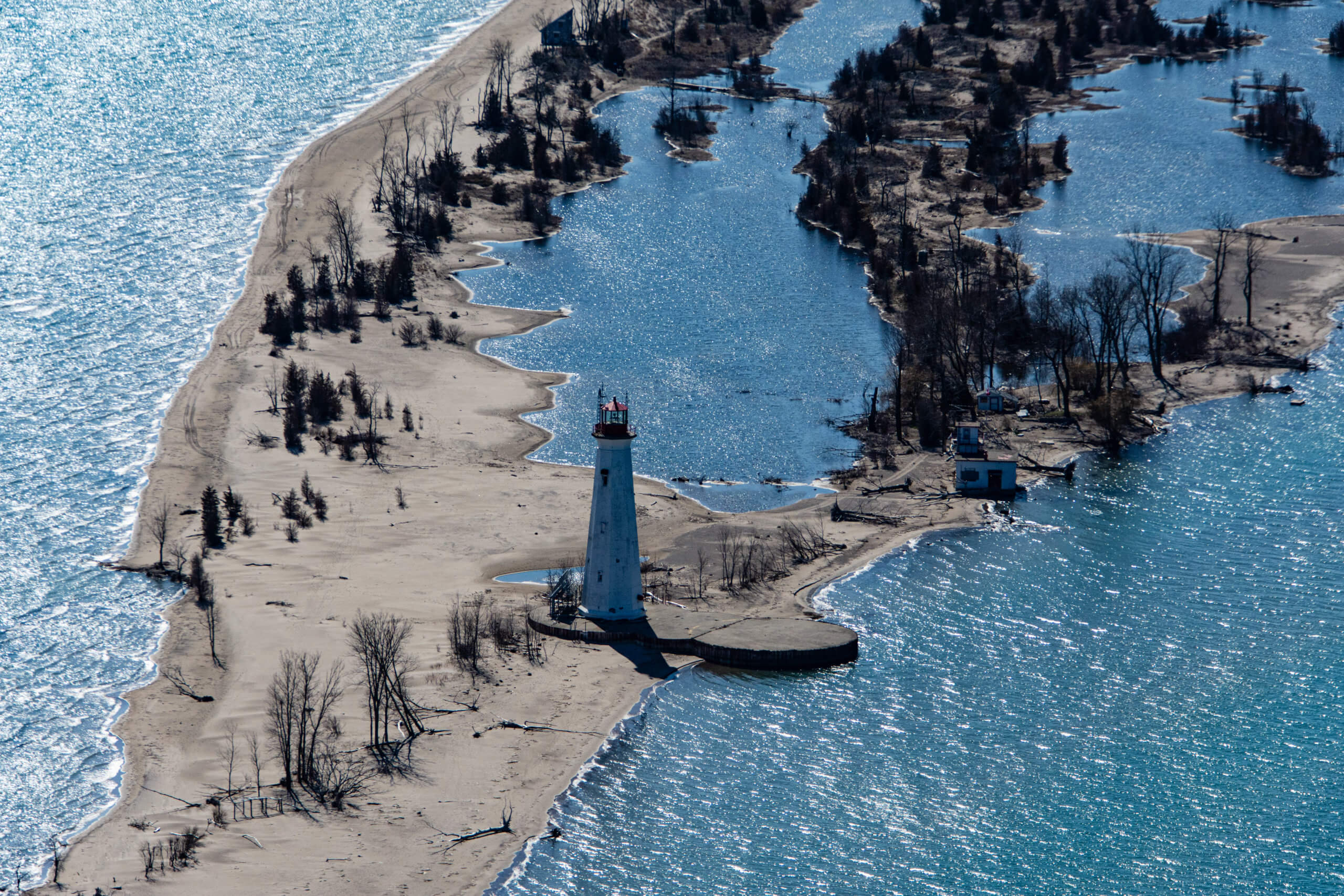The Hidden Treasures of Pukaskwa National Park
Tucked against the Lake Superior shoreline, about halfway between Wawa and Thunder Bay, sits Ontario’s only wilderness national park. Defined by a rugged mountainous coastline and dotted with sandy beaches, Pukaskwa National Park contains some of the province’s best backcountry.
Read on to learn more about what makes this national park special and how to plan your visit.
Looking to visit the Lake Superior National Marine Conservation Area? Read our article: Secrets from an Inland Sea.
Where is Pukaskwa National Park?
Pukaskwa National Park is one of the many stunning parks located on Canada’s Lake Superior shores. Heading northwest from Sault Ste. Marie, you’ll first encounter Pancake Bay Provincial Park, then Lake Superior Provincial Park, followed by Neys Provincial Park. Closer to Thunder Bay, you’ll also find Sleeping Giant Provincial Park. But Pukaskwa is tucked in way before you hit Neys, near the town of Marathon. You’ll have to get off the Trans-Canada Highway and go south on Hwy 627.
At the end of the road is the entrance to Pukaskwa’s one and only front country campground (Hattie Cove) and there are no roads past this campground. If you want to explore further, you’ll have to go by foot or paddle. Due to its lack of roads, this entire part of the Lake Superior is still wild — the largest stretch of undeveloped shoreline anywhere in the Great Lakes region.
Related: Top 10 Things to do in Northern Ontario
What’s so special about Pukaskwa?
For 135 km, Pukaskwa winds its way around the rugged and craggy shores of Lake Superior, the world’s largest lake. Superior is so vast, deep and unpredictable that it is often referred as an inland sea. Waves crash against the ancient granite rocks, pines and spruce bend from the wind that hits them relentlessly on these remote shores. In some parts, the cliffs rise high from the water and sea caves form. In others, the rocks give way to secluded beaches.
The surrounding forests are part of the central boreal uplands, a huge swath of forest within the Canadian Shield that stretches from Saskatchewan to Quebec. In addition to endangered and rare plants such as the mountain huckleberry and Pitcher’s thistle, you’ll find both northern and southern tree species throughout the area — jack pines and black spruce, aspen and white birch among others.
The coastal forests are a rich biodiverse landscape that is home to a variety of birds and animals. Big mammals such as black bears, moose, grey wolves, woodland caribou and even the Canada lynx roam these parts, feasting on the richness of the forest. More than 1,800 square kilometres are preserved in this park, much of which is only accessible to those willing to put in the work to get there.
Things to do at Pukaskwa National Park
Become Immersed in Indigenous Culture
The land in and around Pukaskwa is the home of the Anishinaabe First Nation and learning about Indigenous culture is a big part of visiting this beautiful place. Stop by the Anishinaabe Camp, which has weekly programming that helps visitors understand the spiritual and historical traditions of the local Anishinaabek people.

Visitors participating in drum social program at the Fire Circle with park interpreter. Photo by Parks Canada/Scott Munn
Hike the Trails of Pukaskwa
The biggest attraction at Pukaskwa is the hiking. Whether you’re looking for a scenic walk, a full-day challenge or an intense multi-day trek, Pukaskwa has you covered.
Easy day hikes at Pukaskwa:
There are two small walks at Pukaskwa that can easily be tackled by most visitors to the park — the accessible Boardwalk Beach Trail, which is a 1.2 km walk to Horseshoe Bay (come in the evening for a killer sunset view!) and the Hattie Cove Fire Walk, a 700-metre stroll through the 2012 prescribed fire zone (cool to see the regeneration that takes place so quickly in the boreal forest).
Moderate day hikes at Pukaskwa:
For those wanting to see more of the beautiful surroundings, the park offers four trails that can be done individually or combined for a full day of hiking.
The Bimose Kinoomagewnan Trail is known as the “Walk of Teachings” because it contains plaques that showcase the Seven Grandfather Teachings from Ojibway elders and accompanying artwork that shows how Ojibway youth of today understand and interpret these ancient teachings. The 3.7 km trail travels through boreal forest and wetland areas as it winds its way around Halfway Lake.
The 2-km Beach Trail is exactly what it sounds like — a walk on the beach! This trail takes you along the Lake Superior coast to the a series of sandy beaches. Sections of this hike are on the beach with driftwood obstacles and stunning views. There are some great spots to stop and enjoy the beach if you’re not in a hurry.
For even more spectacular views of Lake Superior, head out on the 2-km Manito Miikana Trail — the Spirit Trail — which hasty viewing decks with panoramic views of the lake and the Pic River Dunes.
The Southern Headland Trail really showcases the wild beauty of the Lake Superior shore, taking you on a 2.2 km hike along rugged terrain with views of Horseshoe Bay, Hattie Cove and Pulpwood Harbour. There are rocks covered with arctic-alpine plants and lichens growing among them, driftwood-strewn beaches and beautiful blue water views.
Challenging Day Hike in Pukaskwa
Perhaps the most well-known of all of Pukaskwa’s hikes is the White River Suspension Bridge Trail (which is actually part of the Coastal Hiking Trail, but more on that epic trail later). As its name suggests, this trail crosses a suspension bridge — a spectacular one in fact that hangs 23 metres above Chigamiwinigum Falls. The hike is an 18-kilometre full-day trek over varied terrain.
You’ll start off on the above mentioned Fire Walk before crossing into wetlands (over wooden boardwalks) and into the rocky terrain of the Canadian Shield. There is a long walk through a picturesque forest before you reach the bridge, which is suspended between two cliffs 30 metres apart. Spectacular views of the waterfall and churning river below await.
Multi-day trips in Pukaskwa’s Backcountry
For experienced hikers and paddlers, Pukaskwa’s vast wilderness is a paradise waiting to be explored. These are trips that require preparation and planning. Some hikers prefer to go with guides. Campsites along the routes can be booked in advance.
The 60-km Coastal Hiking Trail traverses over the steep coastline, through the boreal forest and along some of the most stunning beaches around. This is a difficult but rewarding hike (easier in sunny weather and truly treacherous in wet conditions). You can book a water shuttle that will take you to the end of the trail and you then hike your way back.
The Mdaabii Miikna is a a shorter backcountry trail that follows the Coastal trail for a spell and then veers off towards the shore. In total, the trail covers less than 30 km making it a much quicker alternative for those looking for just a weekend of hiking. Despite its shorter distance, the Mdaabii Miikna is just as scenic with beautiful coastal views, rugged terrain and boreal forest.
Paddlers looking to tackle Lake Superior can follow the challenging Coastal Paddling Route — not for the faint of heart! Heading out on the open waters of this vast lake is akin to ocean-paddling so experience is a must. But those that do head out are rewarded with pristine beaches and awesome views.
If the open waters of Lake Superior are not for you, Pukaskwa also has interior paddling routes along the White River and the Pukaskwa River.
Staying in Pukaskwa National Park
This vast national park is more than 1,100 km from Toronto, 400 km from Sault Ste. Marie and 300 km from Thunder Bay. Those who want to visit the park will often camp. The park’s only frontcountry (car accessible) campsite is Hattie Cove, which has 67 campsites, about half of which have hydro. You are not able to reserve these in advance as they are offered on a first-come, first-served basis.
The campground also has oTENTiks —a cross between a cabin and a tent — available and these are reservable in advance as are the backcountry campsites that you would canoe or hike into. Visit the Parks Canada website for more information on reservations.
Keep in mind the Canada national park only offers amenities from May – October.








